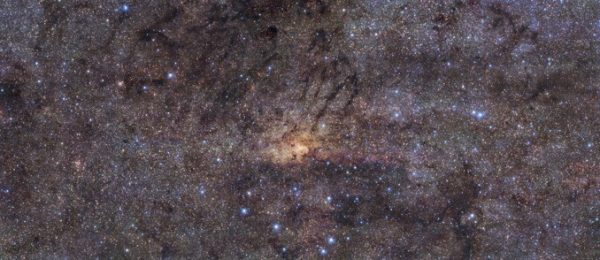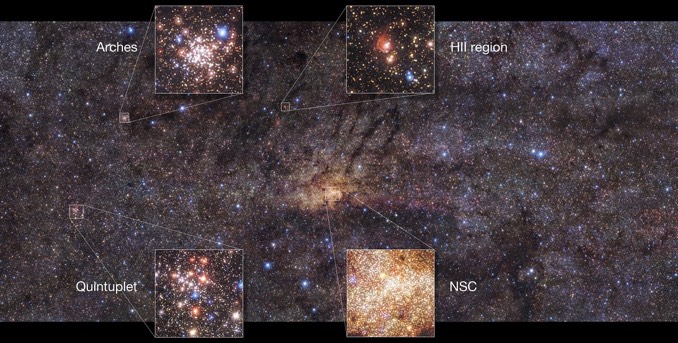A titanic burst of star formation in Milky Way’s recent past – Astronomy Now Online

Peering into the heart of the Milky Way, astronomers using the European Southern Observatory’s Very Large Telescope and the HAWK-I infrared camera have found evidence for a relatively recent burst of star formation so intense it likely cooked up more than 100,000 massive, fast-burning suns that then exploded in supernova blasts.
The researchers found that about 80 percent of the stars in the galaxies central region formed between eight and 13.5 billion years ago. That was followed by about six billion years during which star formation was very low. Then, about one billion years ago, an intense burst of star formation occurred over a relatively brief 100 million years or so.
The combined mass of those stars was possibly as high as a few tens of millions of Suns. The Milky Way currently produces stars at a rate of one or two solar masses per year.

“The conditions in the studied region during this burst of activity must have resembled those in ‘starburst’ galaxies, which form stars at rates of more than 100 solar masses per year,” said F. Nogueras-Lara at the Max Planck Institute for Astronomy in Heidelberg, Germany.
“This burst of activity, which must have resulted in the explosion of more than a hundred thousand supernovae, was probably one of the most energetic events in the whole history of the Milky Way,” he added.
The findings are contrary to the long-held assumption that stars in the central nuclear dis formed continuously over the life of the galaxy.
The research was based on observations using ESO’s High Acuity Wide-field K-band Imager, or HAWK-I instrument on the VLT. Sensitive to infrared light, HAWK-I was able to peer through intervening dust and capture a remarkably detailed view of stars populating the galaxy’s central region. The image, first published in Astronomy & Astrophysics in October, has a level of detail equivalent to an observer in Munich seeing a soccer ball in Zurich.
The area imaged is a disk-shaped region roughly 1,000 light years across that surrounds the Milky Way’s compact central region where a supermassive black hole resides.





